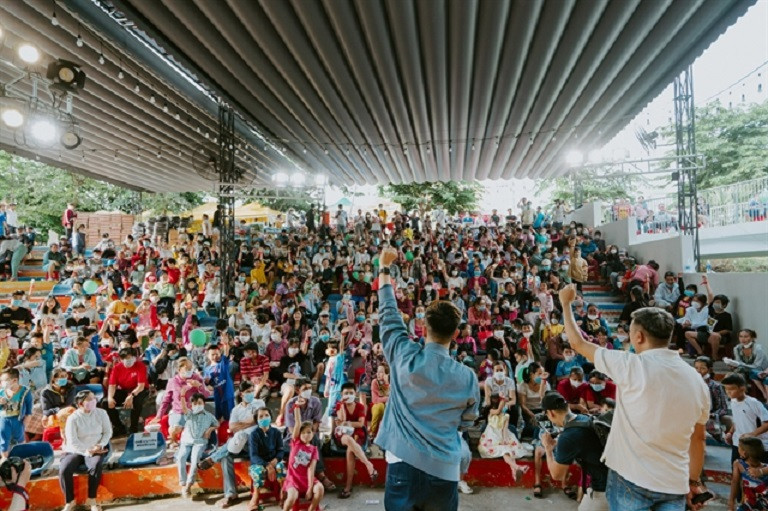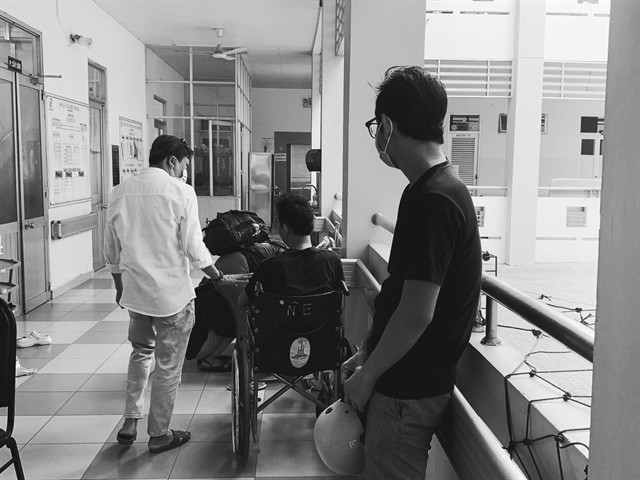Over thirty years after the first HIV case was reported in Việt Nam in 1990, stigma and discrimination against people living with the virus remains a prominent issue in the country, prompting the community itself to prevail and advocate for changes.

When his school found out that An (not his real name) had been living with HIV, he was nearly made to drop out.
While the school board pondered a decision on his case, An had been made to sit in a separate corner of the classroom and not allowed to have lunch alongside his classmates – until the Vietnam Network of People Living with HIV/AIDS (VNP+) reached out to him and his school to ensure that he continues his education.
An’s was only one among the typical cases that VNP+ coordinator Nguyễn Anh Tú had been working on to counter the ongoing stigma and discrimination towards people living with HIV (PLHIV), despite existing policies.
Việt Nam has included provisions against discrimination for PLHIV in its Law on HIV/AIDS Prevention and Control since 2006, which protects their rights and access to social activities, healthcare, education and privacy regarding their HIV status.
The Ministry of Health also introduced a directive on strengthening activities to reduce HIV-related stigma and discrimination at medical facilities in 2017. Meanwhile, the National Strategy on HIV/AIDS Prevention to 2020 with a vision to 2030 sets a specific goal that 80 per cent of the 15-49 age group do not discriminate against PLHIV.
According to Decree 117/2020/NĐ-CP which prescribes penalties for administrative violations in the medical sector, student expulsion or work contract termination based on a person’s HIV status can result in a fine of VNĐ10 million to 20 million (US$390-790).
The document also states that disclosing a person’s HIV status without their consent, for reasons other than epidemiological surveillance or informing medical test results, can also be subjected to financial penalties – so are demanding HIV test results or refusing PLHIV participation in school activities, social service facilities or healthcare.
However, once their medical condition is involuntarily revealed, the impact felt on PLHIV goes beyond the moment these fines are imposed.
“School life for a person with HIV can be quite weary,” said Tú, explaining that if the students and their parents are unable to persevere in these cases, their only choice is to transfer to another school.
Many people of working age who find themselves in the same situation choose to quit their jobs – not because of their employer’s decision, but how the anticipated prejudice makes them no longer feel safe in their workplace.
They not only face intolerance from people around them but also the stigma from within, according to Nguyễn Tấn Thủ, a physician who has spent over a decade providing support for PLHIV.
“This needs to be addressed because we fight against the epidemic, not those affected by it,” said Thủ.
Internalised & intersectional
Việt Nam’s latest PLHIV Stigma Index, which was released in 2021, highlighted the internalised and intersectional stigma associated with HIV as a major concern.
The report, which surveyed 1,623 participants across seven cities and provinces in Việt Nam, showed that 68.8 per cent of PLHIV hesitated or delayed medical care for their condition because they were worried about others finding out their HIV status.
More than 40 per cent were also afraid that medical workers would mistreat them or disclose their status without their consent. Confidentiality of HIV status in healthcare settings was a significant issue, as over half of the respondents reported they were unsure if their medical records were kept private.
The 2021 Stigma Index in Việt Nam also demonstrated that in addition to the HIV-related prejudice, key population groups most affected by the epidemic are also facing more stigma due to the different aspects of their identity.
They include men who have sex with men, sex workers, transgender people, people who inject drugs, and people in prisons and other closed settings.
According to the report findings, their identities and behaviours are often perceived as socially unacceptable within the local culture, which was reflected in the high levels of intersectional stigma from these groups.
Transgender women, in particular, reported significant levels of HIV stigma and discrimination, with 40.7 per cent of transgender women reporting experiences of stigma within healthcare settings in the year before the study.
“Sometimes, the issue is more about fear than discrimination,” said Nguyễn Anh Phong, an advocate who has spent over 15 years supporting PLHIV.
“Anyone could feel afraid when they hear about diseases or viruses, and it’s the same for HIV. But people have different ways of responding to fear,” Phong said, as they have the choice to either shut out other opinions or educate themselves about the issue.
“If they choose not to learn, they will not know that HIV is easy to prevent and difficult to transmit. For example, HIV treatment can bring the viral load to an undetectable level, meaning the disease is not transmittable from someone with HIV to another person, or from an HIV-positive mother to her child,” he said, explaining the concept known as U=U (Undetectable=Untransmittable).
Phong believes that if this is common knowledge, the fear would gradually subside, and in turn, so would the stigma and discrimination towards PLHIV.
Community-led action
The Ministry of Health and its Việt Nam Administration of HIV/AIDS Control (VAAC) has been doing an impressive job in HIV communication, but the key role in this process remains with the PLHIV community.
As part of the key population groups, they understand the best way to reach out and communicate with others who are facing the same risks, with technical support offered by health experts and physicians.
“It is essential to recognise and highlight this community’s role in HIV response, which will help enhance the effectiveness of models aimed at reducing stigma and discrimination,” said Phong.
The VAAC has also underlined the role of community-based organisations in HIV response with their work to offer medical care, consultation and epidemiological surveillance, while mobilising engagement from both the private and public sectors.
“It would be difficult to control the epidemic without the engagement of the community of PLHIV, as they help us reach out to high-risk groups,” VAAC director Dr Phan Thị Thu Hương said in a press interview in Hà Nội for the National Action Month for HIV/AIDS Prevention and Control (November 10 – December 10) last year.
“For groups that were having difficulty accessing health services due to stigma and discrimination, the community connects and introduces them to new approaches, models as well as testing services.”
In addition to intervention measures for cases like An’s, VNP+ also offers capacity training for the PLHIV community that helps improve their knowledge on treatment, community-based testing and access to health care, while boosting community outreach.
Meanwhile, Góp Một Bàn Tay (Giving a Helping Hand), a programme initiated by Phong and Thủ in 2017, has been engaging key opinion leaders and the press to raise awareness and call for the reduction of HIV-related stigma and discrimination.
 |
| Nguyễn Anh Phong (left) standing next to a person with HIV (centre) who receives support for medical treatment from the programme 'Góp Một Bàn Tay' (Giving a Helping Hand). Photo courtesy of Góp Một Bàn Tay |
Gathering the media, philanthropists and community members, Giving a Helping Hand organises various events and activities to raise funds for people living with or affected by HIV.
With its annual charity fund rising from $20,000 to $118,000 between 2017 and 2023, the programme has helped 1,000 children affected by HIV in their education, providing HIV prevention and treatment medications to nearly 2,000 people, and assisting over 1,000 people in obtaining health insurance.
Almost 300 cases received emergency hospital fees. Funeral services for more than two dozen people in the community were also paid for.
“My hope is that as Giving a Helping Hand grows, its value would not only be about the support provided for a single case, or each penny given out or health insurance card,” Phong told Việt Nam News, adding that “it should hold a greater value in changing perception about HIV.” — VNS